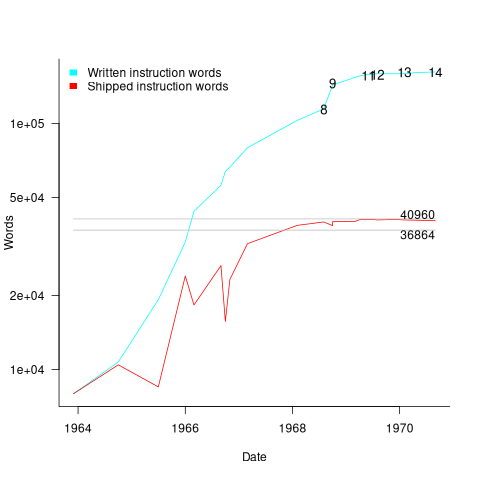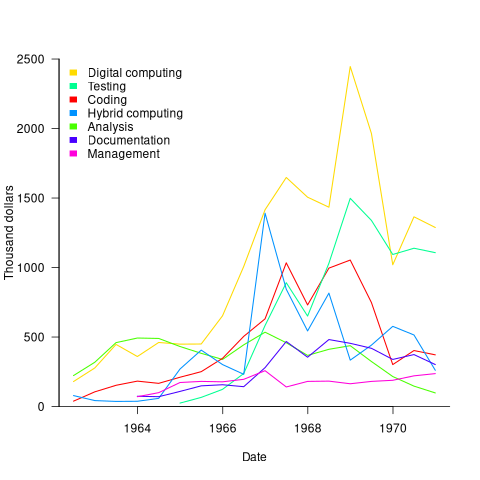Archive
Apollo guidance computer software development process
MIT’s Draper Lab implemented the primary Guidance, Navigation and Control System (GNCS) for the Apollo spacecraft, i.e., the hardware+software (the source code is now available on GitHub). Project Apollo ran from 1961 to 1972, and many MIT project reports are available (the five volume set: “MIT’s Role in Project Apollo” probably contains more than you want to know).
What development processes were used to implement the Apollo GNCS software?
For decades, I was told that large organizations, such as NASA, used the Waterfall method to develop software. Did the implementation of the Apollo GNCS software use a Waterfall process?
Readers will be familiar with the wide gulf that can exist between documented management plans and what developers actually did (which is rarely documented). One technique for gaining insight into development practices is to follow the money. Implementation work is a cost, and a detailed cost breakdown timeline of the various development activities provides some insight into the work flow. Gold dust: Daniel Rankin’s 1972 Master’s thesis lists the Apollo project software development costs for each 6-month period from the start of 1962 until the end of 1970; it also gives the number of 16-bit words (the size of an instruction) contained in each binary release, along with the number of new instructions.
The GNCS computer contained 36,864 16-bit words of read-only memory and 2,048 words of read/write memory. The Apollo spacecraft contained two GNCS computers. The plot below shows the cumulative number of new code (in words) contained in all binary releases and the instructions contained in each binary release, with Apollo numbers at the release date of the code for that mission; grey lines show read only word limit and read-only plus twice read/write word limit (code+data):

Four times as many instructions appeared over all releases, than made it into the final release. The continual turn-over of code in each release implies an iterative development process prior to the first manned launch, Apollo 8 (possibly an iterative waterfall process). After the first moon landing, Apollo 11, there were very few code changes for Apollo 12/13/14 (no data is available for the Apollo 15/16/17 missions).
The plot below shows thousands of dollars spent on the various software development activities within each 6-month period; the computing items are the cost of computer usage (code+data):

The plot suggests that most activities are ongoing over most of the decade. As expected, Coding costs significantly decrease before the release used during the first Moon landing, and testing costs continue at a high rate across the Apollo 11/12/13/14 missions. Why didn’t the Documentation costs go down when the Coding costs went down? Perhaps this was for some upcoming changes (not the Lunar rover which was built by Boeing). Activities in the legend are ordered by total amount spent; totals below:
Digital_Computer $18,373,000 Testing $ 9,786,000 Coding $ 8,233,000 Hybrid_Computer $ 7,190,000 Analysis $ 6,580,000 Documentation $ 4,177,000 Management $ 2,654,000 |
I think this data clearly shows that the Apollo GNCS software was developed using an iterative approach, and given that the cost of Coding was only twice as much as Documentation, within these iterations some form of Waterfall process was probably used.
Recent Comments